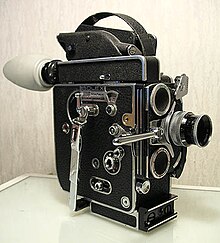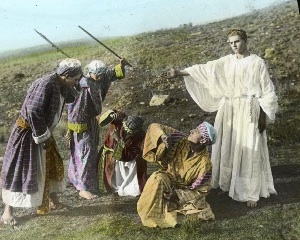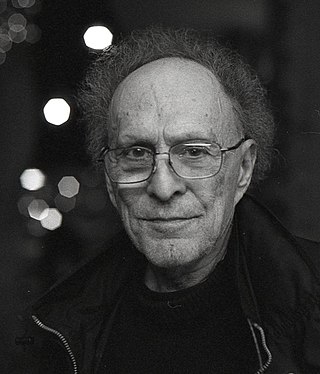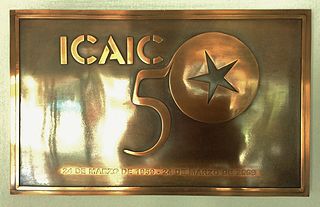

Amateur film is the low-budget art of film practised for passion and enjoyment done without payment.


Amateur film is the low-budget art of film practised for passion and enjoyment done without payment.
The international organization for amateur film makers is UNICA (Union International du Cinema Non Professionel); in the United States the American Motion Picture Society (AMPS), in Canada the Society of Canadian Cine Amateurs (SCCA), in the UK it is the Institute of Amateur Cinematographers. These organizations arrange annual festivals and conventions. There are several amateur film festivals held annually in the United States, Canada and Europe.
The Cinema Museum in London holds a large collection of amateur films whose details can be accessed on-line.
Amateur films were usually shot on 16 mm film or on 8 mm film (either Double-8 or Super-8) until the advent of cheap video cameras or digital equipment. The advent of digital video and computer based editing programs greatly expanded the technical quality achievable by the amateur and low-budget filmmaker. Amateur video has become the choice for the low-budget filmmaker and has boomed into a very watched and even produced industry with the use of VHS and digital video camcorders.
A number of amateur films have been added to the National Film Preservation Board's (NFPB) National Film Registry (NFR) including:
A brickfilm is a film or Internet video made by either shooting stop motion animation using construction set bricks like Lego bricks or using computer-generated imagery or traditional animation to imitate the look. They can sometimes also be live action films featuring plastic construction toys. Since the 2000s the The Lego Group has released various films and TV series and brickfilms have also become popular on (social-) media websites. The term “brick film” was coined by Jason Rowoldt, founder of the website brickfilms.com.

Cinematography is the art of motion picture photography.
Filmmaking or film production is the process by which a motion picture is produced. Filmmaking involves a number of complex and discrete stages, starting with an initial story, idea, or commission. It then continues through screenwriting, casting, pre-production, shooting, sound recording, post-production, and screening the finished product before an audience that may result in a film release and an exhibition. Filmmaking occurs in a variety of economic, social, and political contexts around the world. It uses a variety of technologies and cinematic techniques.

Mormon cinema usually refers to films with themes relevant to members of the Church of Jesus Christ of Latter-day Saints. The term has also been used to refer to films that do not necessarily reflect Mormon themes but have been made by Mormon filmmakers. Films within the realm of Mormon cinema may be distinguished from institutional films produced by the LDS Church, such as Legacy and Testaments, which are made for instructional or proselyting purposes and are non-commercial. Mormon cinema is produced mainly for the purposes of entertainment and potential financial success.

Monte Hellman was an American film director, producer, writer, and editor. Hellman began his career as an editor's apprentice at ABC TV, and made his directorial debut with the horror film Beast from Haunted Cave (1959), produced by Gene Corman, Roger Corman's brother.
Guerrilla filmmaking refers to a form of independent filmmaking characterized by ultra-low micro budgets, skeleton crews, and limited props using whatever resources, locations and equipment is available. The genre is named in reference to guerrilla warfare due to these techniques typically being used to shoot quickly in real locations without obtaining filming permits or providing any other sort of warning.

Nuevo Cine Mexicano, also referred to as New Mexican Cinema is a Mexican film movement started in the early 1990s. Filmmakers, critics, and scholars consider Nuevo Cine Mexicano a "rebirth" of Mexican cinema because of the production of higher-quality films. This rebirth led to high international praise as well as box-office success, unseen since the golden age of Mexican cinema of the 1930s to 1960s. The quality of Mexican films suffered in the decades following the golden age due in part to Mexican audiences watching more overseas films, especially Hollywood productions. This resulted in the rise of infamous Mexican genres such as Luchador films, sexicomedias and ultimately the low-budget direct-to-video Mexploitation film.

Marathi cinema is a film industry of Marathi-language of Maharashtra. It is based in Mumbai. It is the oldest film industry of India and one of the leader in Filmmaking in India's film industry.
Soviet parallel cinema is a genre of film and underground cinematic movement that occurred in the Soviet Union in the 1970s onwards. The term parallel cinema was first associated with the samizdat films made out of the official Soviet state system. Films from the parallel movement are considered to be avant-garde, non-conventionalist and cinematographically subversive.
New Extreme Films describes a range of transgressive films made at the turn of the 21st century that sparked exploitative, scandal and controversy, and provoked significant debate and discussion. They were notable for including graphic images of violence, especially sexual violence and rape, as well as explicit sexual imagery.

A film – also called a movie, motion picture, moving picture, picture, photoplay or (slang) flick – is a work of visual art that simulates experiences and otherwise communicates ideas, stories, perceptions, feelings, beauty, or atmosphere through the use of moving images. These images are generally accompanied by sound and, more rarely, other sensory stimulations. The word "cinema", short for cinematography, is often used to refer to filmmaking and the film industry, and the art form that is the result of it.
Merata Mita was a New Zealand filmmaker, producer, and writer, and a key figure in the growth of the Māori screen industry.
Challenge for Change was a participatory film and video project created by the National Film Board of Canada in 1967, the Canadian Centennial. Active until 1980, Challenge for Change used film and video production to illuminate the social concerns of various communities within Canada, with funding from eight different departments of the Canadian government. The impetus for the program was the belief that film and video were useful tools for initiating social change and eliminating poverty. As Druik says, "The new program, which was developed in tandem with the new social policies, was based on the argument that participation in media projects could empower disenfranchised groups and that media representation might effectively bring about improved political representation." Stewart, quoting Jones (1981) states "the Challenge for Change films would convey messages from 'the people' to the government, directly or through the Canadian public."

The Cinematheque, founded in 1972, is a Canadian charity and non-profit film institute, media education centre, and film exhibitor based in Vancouver, British Columbia.
The term "microcinema" can have two meanings. It can describe low-budget or amateur films shot mostly on digital video, edited on a computer, and then distributed via videotape, disc or over the Internet. Or it can describe a mode of low-budget exhibition — a small theater or screening series operated in order to show small-gauge filmmaking, artists works, shorts, and repertory programming.

The Instituto Cubano del Arte e Industria Cinematográficos was established by the Cuban government in March 1959 after the Cuban Revolution. Its prominent members are Sara Gómez, Tomás Gutiérrez Alea, Julio García Espinosa, Alfredo Guevara and Santiago Álvarez.

Cinema of Ghana also known as the Ghana Film Industry nicknamed Ghallywood, began when early film making was first introduced to the British colony of Gold Coast in 1923. At the time only affluent people could see the films, especially the colonial master of Gold Coast. In the 1950s, film making in Ghana began to increase. Cinemas were the primary venue for watching films until home video became more popular. The movie industry has no official name as yet since consultations and engagements with stakeholders has been ongoing when a petition was sent to the Ministry of Tourism, Arts and Culture which suspended the use of the name Black Star Films.

The Margarita Latin American and Caribbean Film Festival, sometimes known as FilMar,:107 is an important international cultural event dedicated to generating spaces for the distribution and promotion of the best of Venezuelan, Latin American, and Caribbean film.
Karen L. Ishizuka is an independent writer, curator, and documentary producer. She is a third-generation Japanese American and her family was incarcerated during World War II.

Eric R. Williams is an American screenwriter, professor, cinematic virtual reality director, and new media storyteller. He is known for developing alternative narrative and documentary techniques that take advantage of digital technologies.
{{cite book}}: CS1 maint: location missing publisher (link) CS1 maint: others (link){{cite book}}: CS1 maint: others (link){{cite book}}: CS1 maint: location missing publisher (link) CS1 maint: others (link)You can help expand this article with text translated from the corresponding article in French. (October 2020)Click [show] for important translation instructions.
|